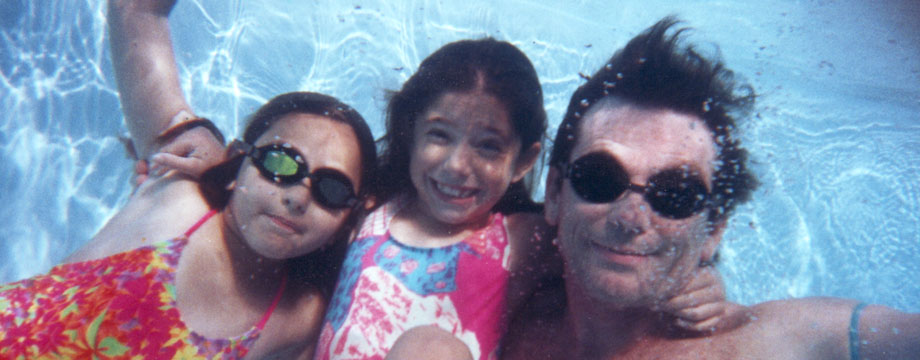How time flies! It’s September 2013 already. Swimming has been good, especially our dives on the Great Barrier Reef of Australia (more on that later). San Diego has a pretty moderate summer (70-mid 80s F.), and our favorite pool usually maintains water temperatures in the 81+ degree range in the competition pool (also offers 1m & 3m diving, but not after August). For a 1 hr. workout covering 3000 yds. or more, this water is a bit warm.
How warm should the pool be for various activities?
If you search online, you will find hundreds of comments by swimmers complaining that the pool is too hot or too cold. Because pool heating costs $$, and affects general pool maintenance, it gets pretty complex when you have different groups using the same outdoor pool. Fortunately, there are some common scientific guidelines, based on the swimmers age and activity level.
“When I was a kid, we swam in icewater, and we felt darn lucky to swim at all”
My research started with the old American Red Cross Life Saving and Water Safety (1956 ed.) manual. My lifeguard training used this book, and talk about changes–talk about tough people in the “olden days”–in the “when to swim” section, the manual says:
“It is most interesting to note the narrow temperature limits within which most persons find it comfortable to bathe. When the water ranges from 70 to 78 degrees it is, apparently , most inviting to bathers. Most people will swim, of course, in water of higher temperature but often find it enervating. Only a comparatively small number of people, however, care to bathe when the temperature of the water falls below 70 degrees and these, as a rule, are hardy souls who have accustomed themselves to bathing in cold water.”
Note for ocean swimmers: San Diego waters seldom go above 70 degrees, and mid-60s temperatures in summer are common.
21st Century Swimming Pool Temperatures
So what are the modern standards used for pool setup, when heating is an option? Warmer pools greatly reduce the chances of hypothermia in bathers. However, at these higher temperatures, heat exhaustion is possible when swimmers are very active.
Swim Classes and Aquatic Instruction
The American Red Cross Scientific Advisory Council recommendations are listed below. They fall within the scope of aquatic instruction, and don’t mention “play” or competition. This data table is from a 2012 Red Cross report (link to full report, 2 pages in pdf format).
| Group description | Time in the water (minutes) |
Temp. (deg. F) |
| Infant/preschool | 20-30 | > 89.6 |
| Learn to swim, ages 6-15 | 30-45 | > 84.2 |
| Junior Lifeguard, ages 11-14 | 45-60 | >84.2 |
| (Sr.) Lifeguard, ages 15-55 | 60-120 | 84.2 to 89.6 |
| Intense activity (e.g. lap swimming) | not specified | 78.8 to 82 |
| Water Safety Instruction, 16-55 yr. | 60-120 Low Intensity | 84.2 to 89.6 |
| Water Safety Instruction, 16-55 yr. | 60-120 Intense activity | 78.8 to 82 |
Competition Pools
For competition and training, FINA, the International Federation (recognized by the International Olympic Committee) for international competition, states in their aquatics rulebook: FR 2.11 Water Temperature shall be 25° – 28°C (77° – 82.4 F).
Conclusion
If you like your water brisk, don’t expect to find it a public, club, or other pool used by a large number and variety of bathers. Unlike the old days, you won’t have to feel the invigorating shock of getting into chilly waters and getting a good cardio workout. If you want that, go to the beach in Southern California, where you’ll find low 60s – low 70s water all summer long (see Ocean & Surf).

